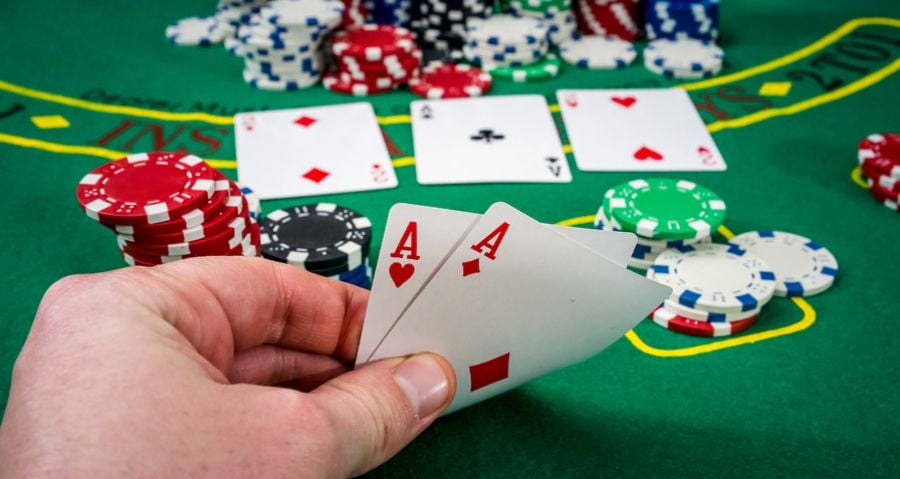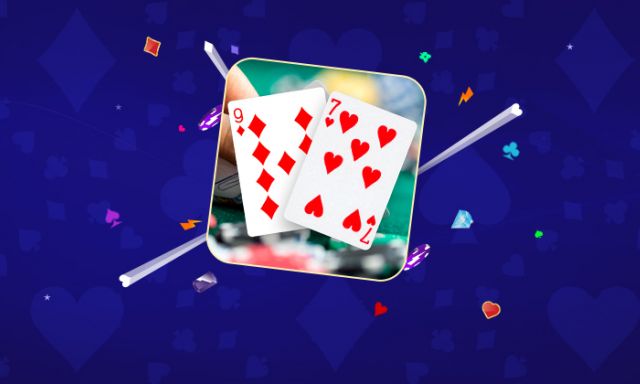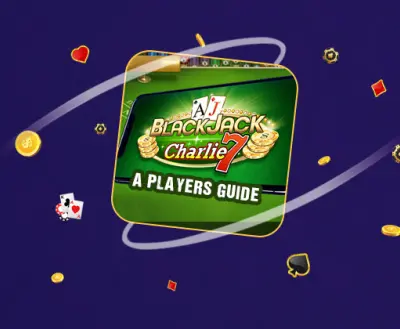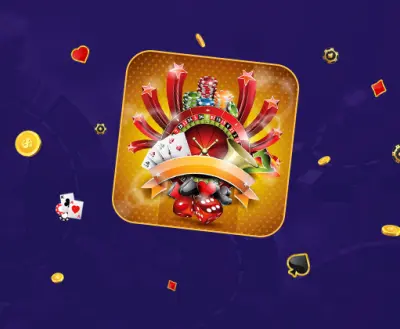When to Hit in Blackjack: A Strategy Guid
Key Takeaways:
- The decision to hit in blackjack, or take another card, can significantly impact your chances of winning.
- Understanding blackjack's basic rules, which involve not exceeding 21 while trying to beat the dealer's hand, is key to formulating strategy.
- Players should be aware of concepts such as 'soft 17' and 'hard 17' as they can impact the risk of busting.
- Following the basic strategy, based on your hand and the dealer's up card, can increase your winning chances.
- The dealer's up card plays a critical role in influencing the player's decision to hit or stand.
- Advanced strategies such as card counting can help players gain an edge in the game by better informing their hit or stand decisions.
- Managing your bankroll is crucial to long-term gameplay and strategy implementation.
- Hitting in blackjack is a calculated decision based on the game's rules, different scenarios, and strategies, not just luck.

Blackjack, a game of thrilling highs and nail-biting decisions, requires a perfect blend of luck, strategy, and most importantly, timing. Understanding when to hit - that is, choosing to take another card to increase the value of your hand, is one of the most pivotal components of this classic game. But why is hitting so crucial in blackjack?
Hitting at the right time can significantly enhance your winning chances, tipping the scales in your favor in a seemingly even contest. It's a maneuver that calls upon knowledge, intuition, and an understanding of blackjack rules. Your hitting decisions, when coupled with strategic play, can make the difference between a memorable win and a forgettable hand.
Mastering the fine art of knowing when to hit or stand in blackjack or live blackjack is a skill worth its weight in chips. Done correctly, it’s not just about improving your hand; it's about defying the odds, making optimal moves, and yes, maximizing your winnings. Ready to uncover the secrets of this vital blackjack strategy? Let's delve into the world of hitting strategies.
Basic Rules and Concepts of Blackjack
Blackjack, also known as '21', is a staple of casinos worldwide. At its heart, the game is a contest between you, the player, and the dealer. Each card is assigned a value: cards from 2 to 10 are worth their face value, while face cards (King, Queen, and Jack) are valued at 10. An Ace can either be 1 or 11, depending on which is more beneficial to your hand.
The aim of the game is simple. You need to beat the dealer's hand without exceeding 21. Going over 21 is a 'bust', and that means an automatic loss, irrespective of what the dealer has in hand. So, you see, every decision you make - whether to hit, stand, double down, or split - becomes crucial in the grand scheme of the game.
Hitting, Standing, and Soft 17 in Blackjack
- Hitting: In blackjack, to 'hit' means to request an additional card. This action is taken when a player believes that one more card could get their hand value closer to 21 without going over. The decision to hit is primarily based on a player's current hand value and the dealer's up card. If you think the additional card will not lead to a bust (i.e., a total value exceeding 21), hitting can be your best bet.
- Standing: On the contrary, to 'stand' in blackjack means to be satisfied with your current hand and not to take any more cards. A player typically decides to stand when they believe their current hand value is competitive, or when there's a high risk that drawing an additional card will result in a bust. Your decision to stand depends heavily on your hand value and the value of the dealer's up card.
- Soft 17: The term 'soft 17' introduces a layer of complexity into the game. A 'soft' hand is when a player holds an Ace that can be counted as 11 without leading to a bust. So, a 'soft 17' means you have an Ace (counted as 11) and a 6. This is different from a 'hard 17', where the Ace is counted as 1 (or doesn't exist), and going over 21 is a potential risk. This difference in the hand's composition can significantly impact a player's decision-making process in the game.
Understanding Blackjack Basic Strategy
Blackjack isn't just a game of chance; it's also a game of strategy. Knowing the basic strategy, including when to hit or stand, can greatly increase your chances of winning. Essentially, the basic strategy provides the best possible move in any given situation based on your hand and the dealer's up card.
By sticking to the basic strategy, you can effectively reduce the house edge and increase your winning chances. It's like a roadmap guiding you through a myriad of blackjack scenarios. But remember, while the basic strategy significantly improves your odds, it does not guarantee a win every time. After all, blackjack is also about playing the odds and, of course, having a little bit of luck on your side.
One factor that significantly influences your decisions in blackjack is the dealer's up card. This is the card the dealer has face-up, giving you a hint of their hand. Depending on what card the dealer shows, your strategy, particularly your decision to hit, may change.
For instance, if the dealer's up card is between 2 and 6, they are more likely to bust. In this scenario, you might decide to stand on lower hand values, hoping the dealer will bust. Conversely, if the dealer shows a 7 or higher, the risk of them busting is lower, and you might be more inclined to hit to improve your hand.
Hitting in Blackjack
Hitting Based on Different Scenarios
Blackjack involves an array of scenarios, each necessitating a different strategy. Let's explore some:
- Hand Value is 8, Dealer's Up Card is 6: In this case, you have a low-value hand while the dealer has a potentially weak card. It would be wise to hit in this situation as you have a low risk of busting and a high chance of improving your hand.
- Hand Value is 10, Dealer's Up Card is 9: You have a mid-range value hand and the dealer has a strong card. The basic strategy suggests that you should hit. The logic behind this is that you are quite unlikely to bust with a hit, and there's a good chance of reaching a hand value of 20.
- Hand Value is 12, Dealer's Up Card is 2: Hesitation to hit with a hand value of 12 is common, due to the fear of busting. However, the basic strategy suggests hitting is the correct move. With only a 1 in 3 chance of busting, and the dealer's 2 considered a 'weak' card, it's a risk worth taking.
- Hand Value is 13, Dealer's Up Card is 7: Here, the dealer has a strong card and the likelihood of them having a higher value hand is high. Despite the potential risk of busting, it would be advisable to hit to increase your chances of a win.
- Hand Value is 15, Dealer's Up Card is 10: This is one of the trickiest hands in blackjack. While you run a high risk of busting if you hit, the dealer also has a strong up card which could lead to a high-value hand. In such cases, the basic strategy would still suggest you to hit, as the odds are more in your favour than standing.
- Hand Value is 16, Dealer's Up Card is 9: Here, the likelihood of busting is high if you decide to hit. But with the dealer's up card being strong, hitting often becomes the better strategy. Remember, every game situation is unique, with factors like the dealer's up card and the number of decks in play significantly influencing your decisions.
Hitting Based on The Dealer's Up Card
The dealer's up card holds great influence in your decision-making process:
- Dealer's Up Card is Between 2 and 6: Generally considered 'weak' cards for the dealer, you might want to be conservative and stand on lower values, hoping for the dealer to bust.
- Dealer's Up Card is 7 or Above: These are strong cards for the dealer. Even if you hold a mid-value hand, you might need to hit to compete and improve your chances.
- Dealer's Up Card is an Ace: This is a strong card due to its flexibility. If you don't hold a strong hand, it's usually advisable to hit. Also, consider the casino's rule for a dealer's soft 17, as it can affect your decision-making.
The Role of Card Counting in Blackjack
Card counting is a technique used by some advanced blackjack players to gain a statistical edge over the house. By keeping track of the proportion of high and low-value cards remaining in the deck, card counters can adjust their bets and playing decisions to maximise their winnings. In essence, card counting can help you decide when to hit based on the remaining cards in the deck.
If there's a high proportion of tens and aces left in the deck, hitting becomes less risky and potentially more profitable. On the other hand, if the deck is rich in low-value cards, you might want to reconsider hitting, especially when your hand value is already high. Keep in mind, though, card counting requires a good memory and quick calculations, but it can be a powerful tool in the right hands.
Card Counting Might Influence Your Decision to Hit
Card counting not only affects your betting decisions but also the action you take, including the decision to hit. For example, if you're holding a hard 16 and the dealer's up card is a 10, conventional wisdom says to hit. However, if you're counting cards and know the remaining deck is low-value heavy, you might choose to stand instead, betting on the dealer to bust.
In contrast, if you have a soft 16 and the deck is rich in high-value cards, hitting becomes an attractive option. A high-value card would get you closer to 21, but without the risk of busting. As you can see, card counting can dynamically influence your decision to hit or stand, depending on the game's circumstances.
Hitting vs. Standing: Making the Optimal Move
The decision to hit or stand is a fundamental aspect of blackjack strategy. It's a constant balancing act – trying to get as close to 21 as possible without going over. When deciding whether to hit or stand, you have to consider not only your hand but also the dealer's up card.
The dealer's up card can give you a hint about their potential hand strength, guiding your decision-making process. If the dealer shows a low-value card, they're more likely to bust, so you might decide to stand with a lower hand value. Conversely, if the dealer shos a high-value card, you might need to take the risk and hit to improve your hand.
When you have a soft 17, the decision to hit or stand becomes a bit more complicated. Since you have an Ace counted as 11, hitting carries no risk of busting. If you get a card value that would otherwise make you bust, the Ace value adjusts to 1, keeping you in the game.
However, standing on a soft 17 can also be a viable option, depending on the dealer's up card. If the dealer shows a low-value card, standing may be the right move, hoping that the dealer will bust. However, if the dealer's up card is high, it might be more beneficial to hit, increasing your hand's value and your chances of winning.
Practical Tips for Strategic Play
Enhancing Your Hit Decision: A Strategic Approach
Making the right choice on when to hit can mean the difference between leaving the table as a winner or a learner. Here are more practical tips to enhance your hit decision strategically:
- Don't Fear the Bust: Many players, especially beginners, fear to bust so much that they miss opportunities to improve their hand. It's important to remember that while busting is not ideal, sometimes the potential rewards of hitting outweigh the risks. In blackjack, being risk-averse can be just as damaging as being too reckless.
- Consider the Game's Progression: Always consider how far along the game has progressed. If you've noticed that a lot of low cards have been dealt and the high cards are likely still in the deck, this could be a good time to hit, especially if your hand isn't strong.
- Consider Your Position: While the dealer has to play by fixed rules, you have the flexibility to decide whether to hit or stand. You can take advantage of this freedom by adjusting your decisions according to the dealer's up card.
Advanced Techniques: Card Counting and Beyond
For those looking to elevate their blackjack game, there are advanced strategies such as card counting. However, it's worth noting that while these methods can improve your edge, they require significant practice to implement effectively.
- Master Card Counting: Card counting can provide valuable insights into whether the deck is likely to yield high or low cards. If the count is positive, the deck has more high cards, making it favourable for the player to hit in hopes of getting closer to 21.
- Understand Composition-Dependent Strategy: This is an advanced strategy where your play depends on the exact composition of your hand, not just the point total. For example, in some cases, a 16 made up of three or more cards should not be hit in the same way as a two-card 16.
- Learn Different Blackjack Variations: Different versions of blackjack have slightly different rules and strategies. For example, the dealer's actions on soft 17 can vary depending on the blackjack variation. By learning the specific strategies for each variation, you can increase your winning chances.
- Manage Your Bankroll: While this tip isn't about when to hit per se, it's crucial in ensuring that you stay in the game long enough to implement your strategies. A good rule of thumb is to bet only a small fraction of your bankroll in a single game.
By integrating these tips into your gameplay, you can play more strategically and increase your odds of winning. Remember, blackjack is a game of skill and chance, and the key to success lies in balancing the two.
Conclusion
In our journey through the fascinating world of blackjack, we've explored the strategic depth that sets this casino favorite apart. Most notably, we've unpacked the concept of 'hitting,' a crucial decision you'll have to make in every round of blackjack.
It's clear that knowing when to hit isn't merely about hunches or luck; it's a calculated decision made easier through a strong grasp of the game's basic rules, an understanding of different scenarios, and the integration of advanced strategies like card counting.
As we have seen, improving your blackjack gameplay and maximizing your winnings involves strategic play and informed decision-making. While it might seem overwhelming at first, don't fret. Embrace the challenge, because the beauty of blackjack lies in its perfect blend of luck and strategy.
Remember, every great blackjack player started where you are right now. With dedication, practice, and the right guidance - which we strive to provide at PartyCasino - you can significantly improve your game. The thrill of blackjack is just a hit or stand away. Don't miss out on the chance to play this intriguing game with confidence and strategy.







